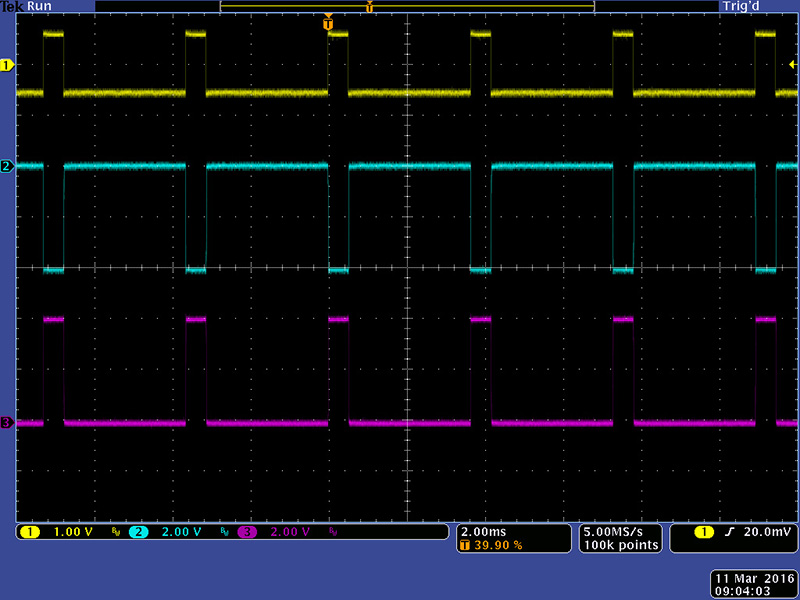 |
Moog 921 Oscillator |
|
The Moog 921 is complete oscillator with additional Aux Outputs and a Clamp function. The Range has one more setting of 1' and the Lo function has been moved to a toggle switch.
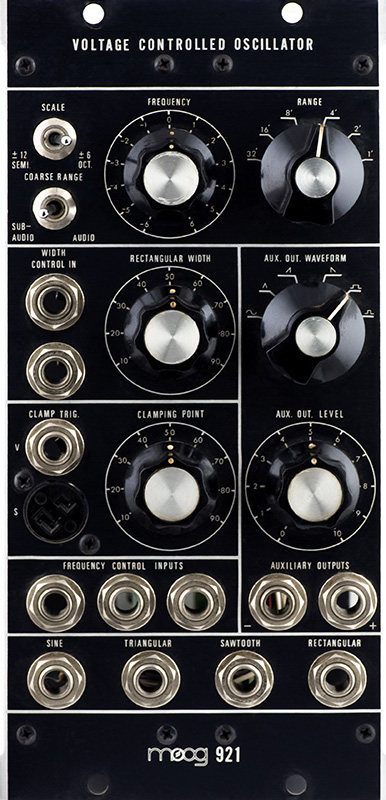
The 921B Oscillator is a 2 MU wide module with PCBs on both sides. The right PCB appears to be a depopulated 921B PCB. Four of the trimmers for scaling on this module are multi-turn. I suspect they have been replaced.
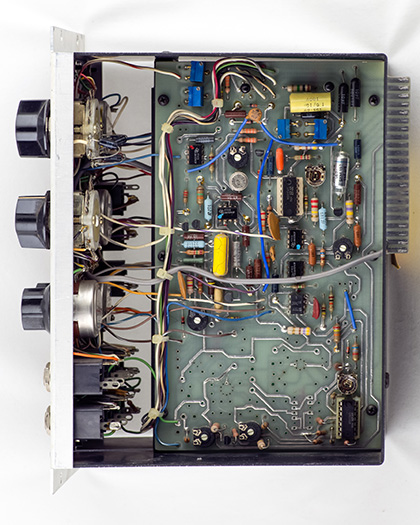
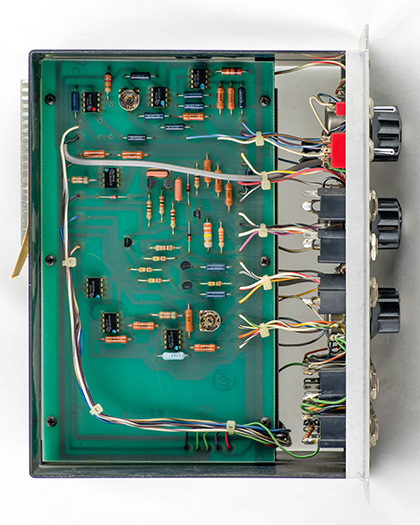
A close-up image of IC508 shows the Tempco R509 underneath the IC with heat sink grease for thermal conductivity to the bottom of the IC.
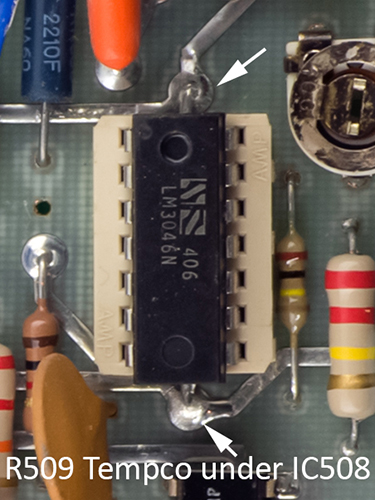
The rear serial number label format changed by 1975. This label indicates the module was assembled May 12, 1975 and tested the next day. The date codes on the three ICs are 1973 and 1974.
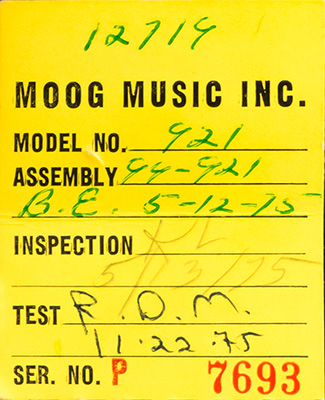
Here is a comparison of the original 921 (on left) and the new Moog reproduction (on right from a posting by Paul Schreiber of Synthesis Technology). They appear to have left the PCB layout as per the original but used radial electrolytic capacitors instead of axial. The wiring is not routed as neat, the tempco is on top instead of the bottom, and the potentiometers appear to not be sealed. Building this with radial capacitors instead of taking the few minutes extra to procure axial capacitors and using unsealed potentiometers is a vast departure from the days of Bob Moog.
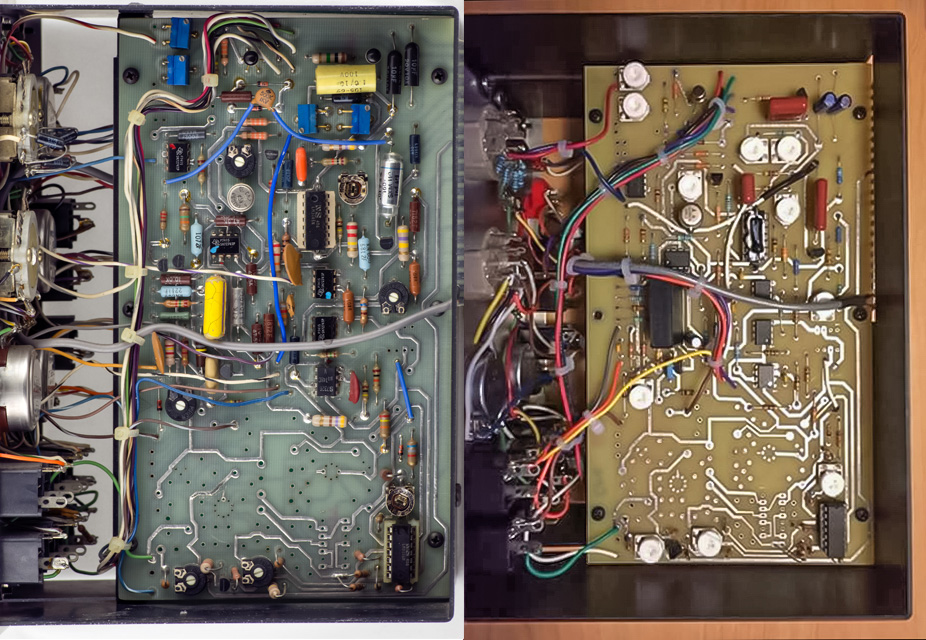
Operation
The four outputs of this module operate the same as the 921B Oscillator. I will describe the two additional features Clamp and Aux Out. Clamp is a hard sync or reset of the oscillator core. The Clamp Level is the level the oscillator is reset to. It is edge triggered and there is a time constant of just a bit over 1 mS before the waveform starts. In this scope image I have the Clamp Level set to 0V for the triangle and sine waves. Note the ramp wave is reset at a negative voltage.
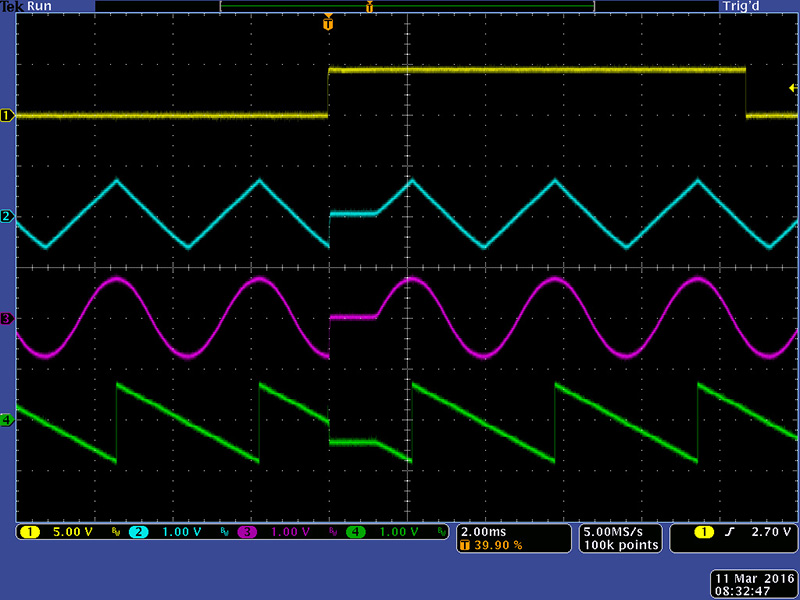
I've adjusted the Clamp Level so the ramp is reset to 0V.
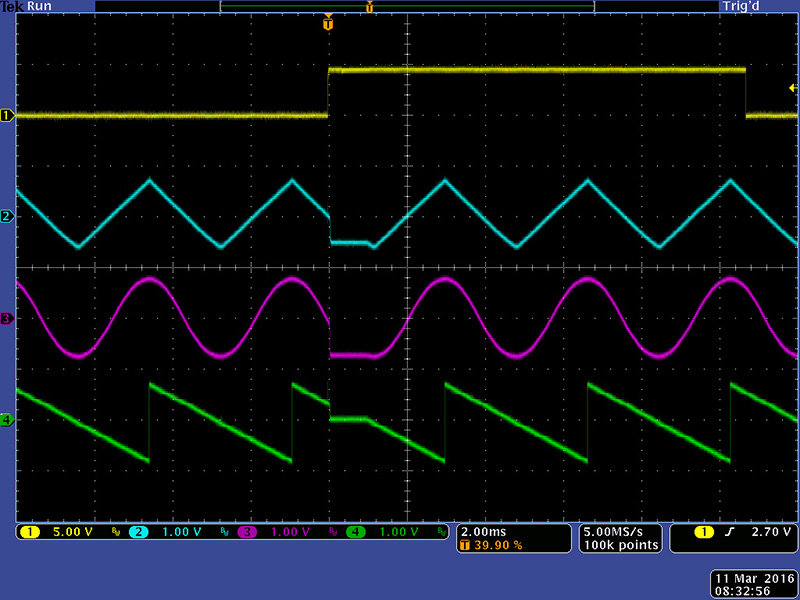
The Aux Outs have variable gain up to 5X so you can get a +/-4V output level. The left jack is inverted from the main out and the right jack is in phase.
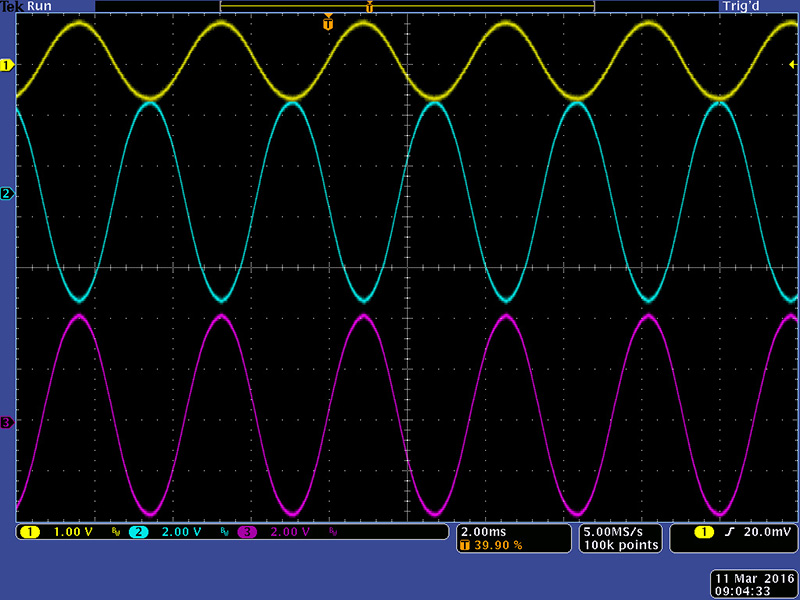
The rectangle Aux Outs are uni-polar even though the main output is bi-polar. The output level is 4V pk-pk.
